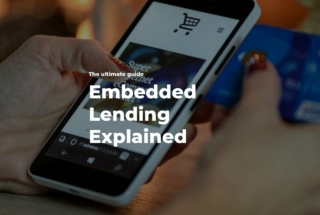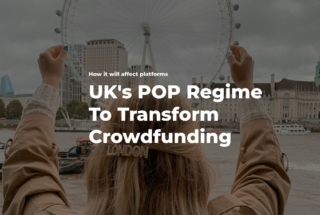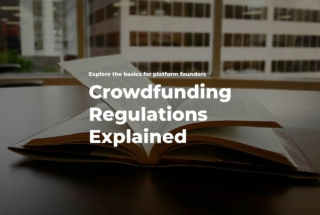The Business Model of P2P Lending for Real Estate: BA Exclusives Part 1
No time to read? Let AI give you a quick summary of this article.
This is the start of the BA Exclusives series which is a series of short articles written by our business analyst. The articles aim to cover 4 major SME and real estate crowdfunding business models:
- P2P lending for real estate financing
- Equity investing for real estate financing
- P2P lending for SME financing
- Equity investing for SME financing
Don’t forget to subscribe to the blog updates and we are good to go! 🙂
How P2P lending for real estate started and what the reasons were
Recent changes in the regulations allowed amateur (regular) investors to invest in various projects. Among the pioneers to change regulations was the United Kingdom. In around 2014, the announced changes in tax legislation stimulated real estate businesses to seek new, alternative, or additional sources of construction financing.
Taking a loan, constructing a building and renting it out or selling it was no longer that attractive. Now, you had to pay an additional 3%1 on all purchases of additional residential property above £40,000, such as buy-to-let properties and second homes. Apart from that, the government changed the mortgage tax relief policies2 and introduced a flat tax credit at the 20% rate.
“This Budget restricts relief for mortgage interest for individual landlords to the basic rate of income tax, phased in over 4 years, limiting the advantage that these individuals currently enjoy over those purchasing their own home ends the permanent non-domicile status”
Therefore, real estate companies needed an alternative source of financing with lower interest rates compared to banks. This was the sweet spot for the crowdfunding platforms that connected both institutional and regular investors and property developers. Crowdfunding became the easiest way to get funding within a compressed timeline. A previously inaccessible club of private investors became available for those who would only invest on Kickstarter.
Investors were now able to choose which property development project to invest in, manage their money, buy and sell securities and benefit from using ISA tax-advantaged accounts which meant saving 20% of their revenue from investments. The only price was risk. Compared to traditional bank deposits, crowdfunding investments are much riskier ventures where returns are not guaranteed in case of the default of the developer.
Understanding the target audience on a P2P lending platform for real estate crowdfunding
Crucial for P2P lending business model is to understand what target audience is specific to this type of business. Here are the major types of users on a real estate crowdfunding platform:
Regular investors (retail, everyday investors) – amateur investors who usually invest smaller amounts of money compared to sophisticated or institutional investors. The market of regular investors is huge which makes it an attractive user base for real estate crowdfunding platforms.
Retail investors are usually easier to market to using relatively simple methods of promotion. Usually, the types of promotion that work to attract the retail investors organically include blog content (educational content, formulas, strategies, “insights”, etc.), video content on YouTube, LinkedIn or Facebook, clear benefits in terms of tax-advantageous investing, etc.
Easier-to-reach retail investors allow crowdfunding platforms to attract pretty big sums of money. For example, Curve gathered 4 million pounds in “just minutes”3 on CrowdCube.
Institutional investors – professional investors, a user base that is also drawing the attention of crowdfunding platforms. The right approach, sophisticated marketing, diversification and higher interest rate for the bigger investment sums are the methods that crowdfunding platforms use to make their offerings more attractive to professional investors.
Usually, to market to the institutional investors, platforms have to prepare harder and include more targeted promotional materials such as presentations on each real estate offering or asset class to outline the project magnitude, revenue, terms and rates, risk mitigation and other important areas.
Developers (Fundraisers, Borrowers) – developer-companies that are looking for alternative financing methods. Real estate development companies may seek funds to do various projects including:
- Ground up construction (rare)
- Property renovation
- Buy-to-let (buy-to-rent) or buy-to-sell, etc.
Developers are particularly interested in P2P lending because they can get several rounds of funding within hours or days. However, how fast the company gets capital depends on the crowdfunding platform itself. We’ll talk about it in Part 2 of this article.
Investment advisors – professional investors that offer black pool investment services. Advisors are trusted and appointed service providers who usually invest on behalf of the regular investors. They have an FCA license for investment consulting and investment management services. Advisors have recently become popular again, especially in the light of events like the London Capital and Finance (LCF) scandal4. In some cases, advisors are the only way to attract funds on a crowdfunding platform.
FCA introduced one-year limitations on the retail investing activities5, mainly, the promotion of mini-bonds. This year might become a game-changer for the real estate P2P lending platforms when the new regulations take place. But who knows what to expect.
Platform owners – entrepreneurs with financial background, especially, in real estate investing. Roughly speaking, platform owners are often ex-property-developers who know firsthand what it’s like to seek funding for a real estate project. They usually hire financial experts and start raising funds for their own or somebody else’s RE projects.
Also, the platform owners might be advisors – the ones who have a background in the same business domain. Usually, they’ve been previously operating a local firm or have been working offline but in the times of digitalization decided to switch to the online world to automate and speed up the processes.
Wrapping up Part 1 of the P2P lending for real estate series
In Part 2 of the P2P lending business model, we’ll go through the loan evaluation nuances, investment settlement and money processing practices on a P2P lending platform for real estate crowdfunding. In addition to that, we’ll dive into the user roles mentioned above and how they interact on a P2P lending platform.
We’ll also touch things like secondary market, auto-investing, and portfolio management and whether you need to have these features on your platform.
Hope you’re excited to learn more about the P2P lending business model as well as the upcoming other models, so stay tuned!
Article sources:
- Bot Verification
- Summer Budget 2015 - GOV.UK
- Fastest Startup To Ever Hit £4 Million Crowdfunding On Crowdcube: Fintech Curve Kills It, Now At £5.5 Million | Crowdfund Insider
- Investors face £230m loss in London Capital & Finance collapse | Investing | The Guardian
- Temporary intervention on the marketing of speculative mini-bonds to retail investors | FCA



